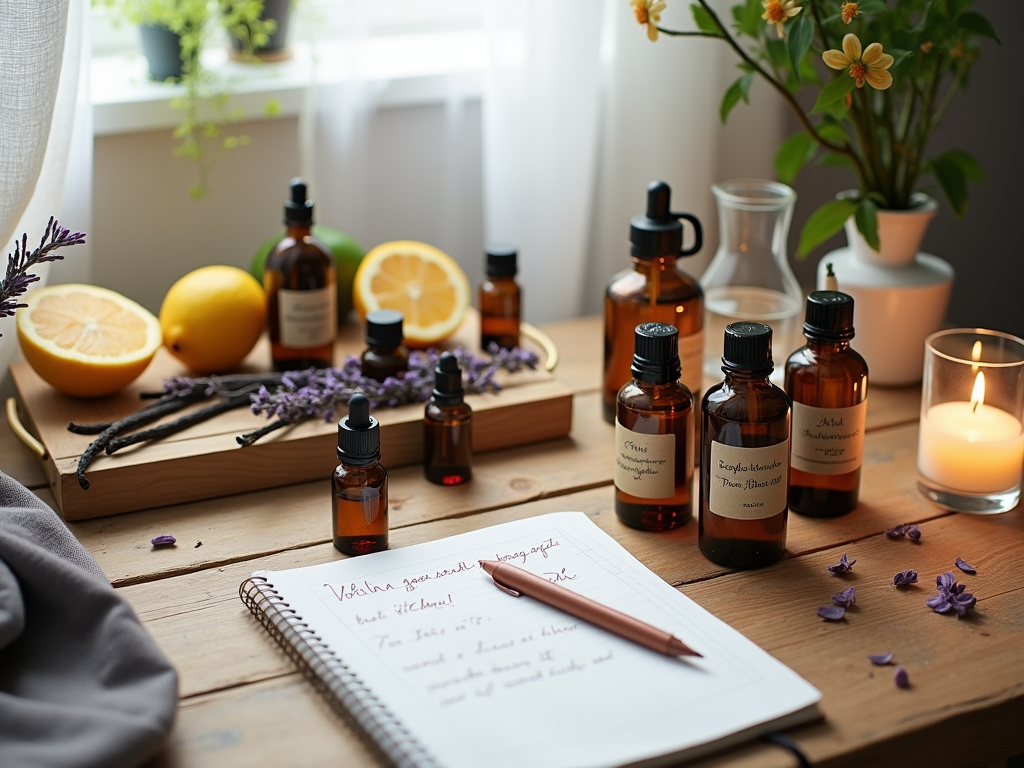
Making your own fragrance at home gives you control over ingredients while encouraging creativity through personalized blends of essential oils. From sophisticated perfumes to room-refreshing sprays, the process invites both artistry and precision, blending personal expression with science.
Key Takeaways
- Homemade scents let you avoid artificial additives and embrace natural alternatives.
- Essential oils, carrier oils, and understanding fragrance layers—top, middle, and base notes—form the foundation of a successful blend.
- Quality tools, like dark glass bottles and droppers, help maintain precision and extend the life of your creations.
- Allowing your mixture to mature for 7 to 30 days deepens its complexity and improves its harmony.
- DIY fragrances are unique, heartfelt gifts and an enjoyable way to explore creativity.
Why Make Your Own Fragrance?
Creating your own fragrance isn’t just about saving some money—though that’s a nice bonus. The real beauty lies in the freedom to craft a scent that’s completely yours. Store-bought perfumes? Sure, they smell great, but they often come packed with synthetic chemicals you’d rather avoid. By making a natural perfume at home, you can skip harsh ingredients while still smelling incredible.
Customization is where DIY fragrance truly shines. You can play around with essential oils and natural ingredients to create customizable scents for every mood or moment. Maybe a light lavender and citrus blend for a sunny spring day? Or something warm and spicy for cozy winter nights? The possibilities are endless, and you’re in control.
If you’re someone who loves to give meaningful gifts, a homemade fragrance is perfect. It’s personal, thoughtful, and you can design it specifically for the recipient’s tastes. Plus, it doesn’t have to stop with just perfumes—consider pairing it with other handcrafted home items like a homemade candle. If you’re new to that, check out this guide on how to make a candle, and you’ve got yourself a gift set.
Finally, making your own fragrances can quickly become a fun creative outlet. Mixing and experimenting with different elements feels a little like being a perfumer in a lab, except you’re designing scents as unique as your personality! And unlike factory-made options, your creations truly stand out.
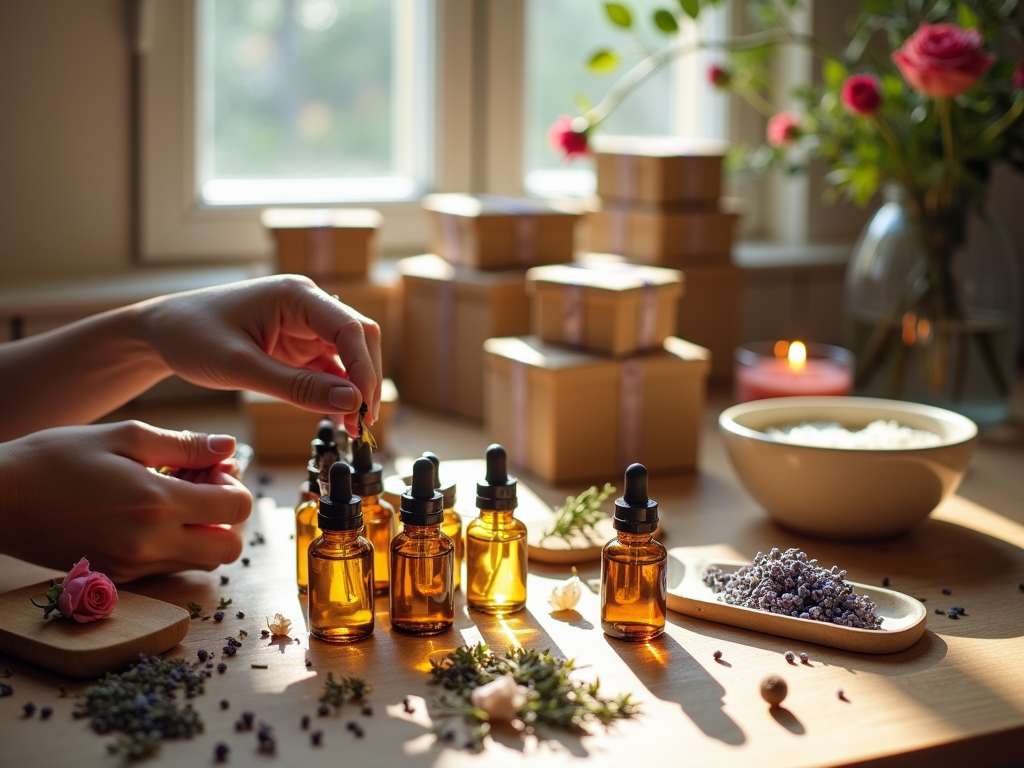
Understanding the Essentials: Oils, Notes, and Their Roles
Essential oils are the foundation of creating fragrances at home. They’re derived from plants through methods like steam distillation and solvent extraction. While steam distillation delivers pure, aromatic oils, solvent extraction is often used for more delicate flowers. The method impacts both quality and price—steam-distilled oils tend to be purer but can cost more due to the involved process.
Carrier oils play a crucial role in fragrance blending. These oils, such as jojoba or sweet almond, dilute essential oils, making them skin-safe. Jojoba oil absorbs slowly, allowing the scent to linger, while sweet almond has a faster absorption rate, making it ideal for lighter blends. Both have a long shelf life, ensuring your creations last.
Fragrance notes are the layers of a scent, forming a pyramid:
- Top notes: These are light and fresh, such as bergamot or lemon, and evaporate quickly.
- Middle notes: These are heartier scents like lavender or geranium, which emerge once the top fades.
- Base notes: Rich and long-lasting, like sandalwood or patchouli, giving depth as the scent settles.
Here’s a quick comparison for clarity:
| Oil Type | Example | Scent Profile | Usage | Safety Notes |
|---|---|---|---|---|
| Essential Oil | Lavender, Lemon | Floral, Citrus | Core scent ingredient | Test before skin use |
| Carrier Oil | Jojoba, Sweet Almond | Neutral or mild | Safe dilution | Patch test recommended |
For more information on elevating your home’s ambiance, check out advice like how to make a candle to complement your DIY fragrances.
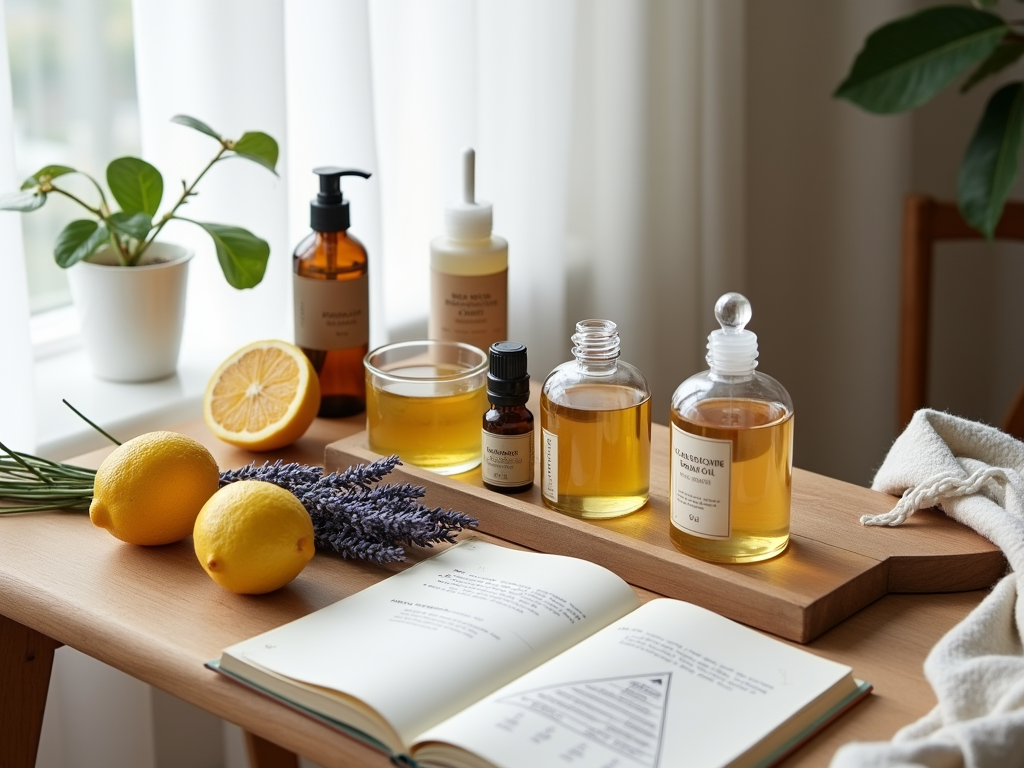
Gathering Your Fragrance Toolbox
Having the right tools sets the foundation for crafting amazing scents. Start with some basics: measuring beakers for accuracy, droppers for precise oil handling, dark glass storage bottles to protect your blends from light, and mixing sticks for combining ingredients. Clean, sterile equipment is absolutely necessary. Using contaminated tools can ruin your fragrance or even pose health risks.
When deciding on storage, glass bottles are the preferred choice. They don’t react with essential oils, unlike some plastics that may leach chemicals. Dark glass is particularly great for extending shelf life by blocking UV rays. Keep bottles in a cool, dry spot for extra longevity.
For perfect blends, fragrance tools like the Perfumery Calculator app can simplify ratios and formulations. This is especially useful if you’re experimenting with tiny batches. With the right setup, creating your own scent is as rewarding as learning how to make a candle!
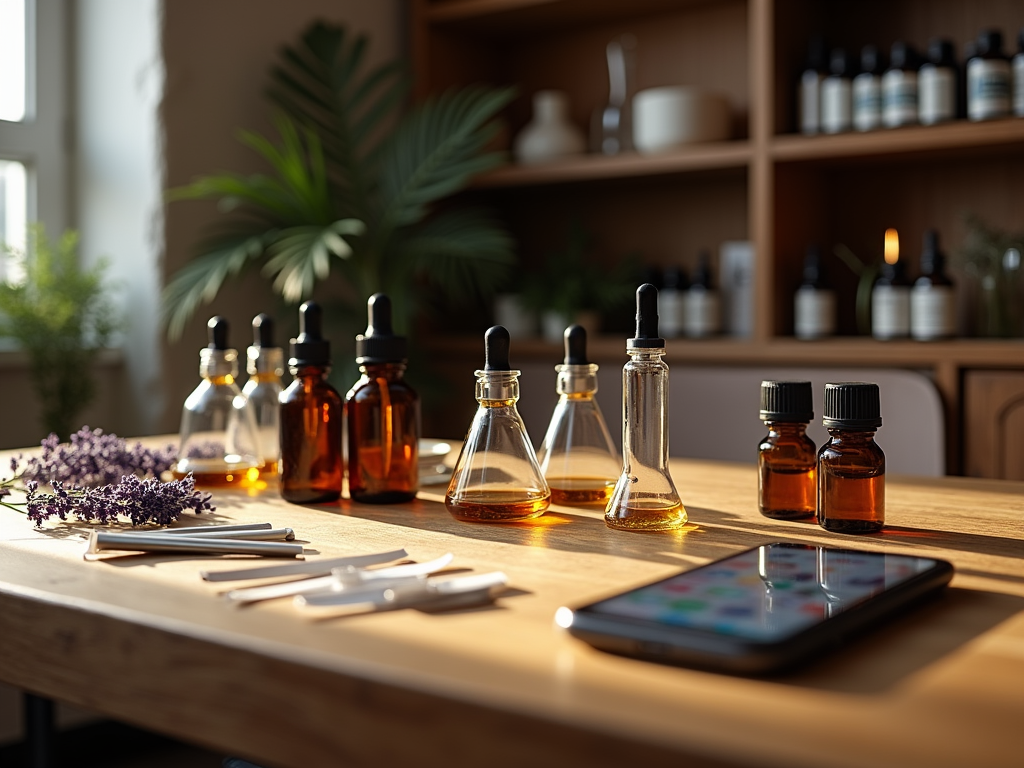
Blending Basics: Step-by-Step Guide to Homemade Perfume
Creating your own fragrance starts with picking essential oils that match the vibe you’re going for. Floral lovers may lean on lavender or rose, while earthy fans might prefer patchouli or cedarwood. Always measure your oils carefully—perfume making is both creative and precise. A typical ratio is:
- 30% top notes (like citrus)
- 50% middle notes (floral or herbal scents)
- 20% base notes (musky, woody tones)
Mix these with a carrier oil, such as jojoba or sweet almond, to dilute the concentrated oils. Let your blend macerate for seven to 30 days, depending on the complexity of the fragrance. This step enhances balance while deepening the scent.
Sample idea: Blend 5 drops of orange, 10 of lavender, and 5 of vanilla for a fresh floral twist. Prefer it stronger? Adjust oil-to-carrier ratios.
For practical tips on seasonal home additions, check out how to make a candle.
Extending Creativity with Room Sprays
A homemade room spray is a simple way to craft an air freshener that’s both personal and natural. Start by combining essential oils with a carrier liquid—this could be distilled water, alcohol, or witch hazel. The carrier plays a vital role: alcohol disperses scents widely and lingers longer, while water offers a more subtle and gentle aroma. Witch hazel sits between the two, offering better scent balance while also acting as a mild preservative.
Here’s a quick guide to crafting blends for specific vibes:
Relaxation Spray Recipe
- Ingredients: 10 drops lavender oil, 5 drops chamomile oil, 3 oz witch hazel, and 2 oz distilled water.
- Combine in a spray bottle and shake before each use.
Energizing Spray Recipe
- Ingredients: 8 drops orange oil, 6 drops peppermint oil, 4 oz distilled water, and 1 oz alcohol (like vodka).
- Mix well in a glass spray bottle for invigorating bursts of freshness.
Always prioritize safety. Avoid oils like tea tree and eucalyptus if you’ve got pets—they can be harmful to animals even in small amounts. Stick to safe essential oils and dilute properly; around 20 drops per 4 ounces of liquid is generally fine. Test any recipe for irritation by spraying a small area before wider use.
Want to add ambiance to your home beyond scent? Check out this guide on how to make a candle for a cozy pairing!
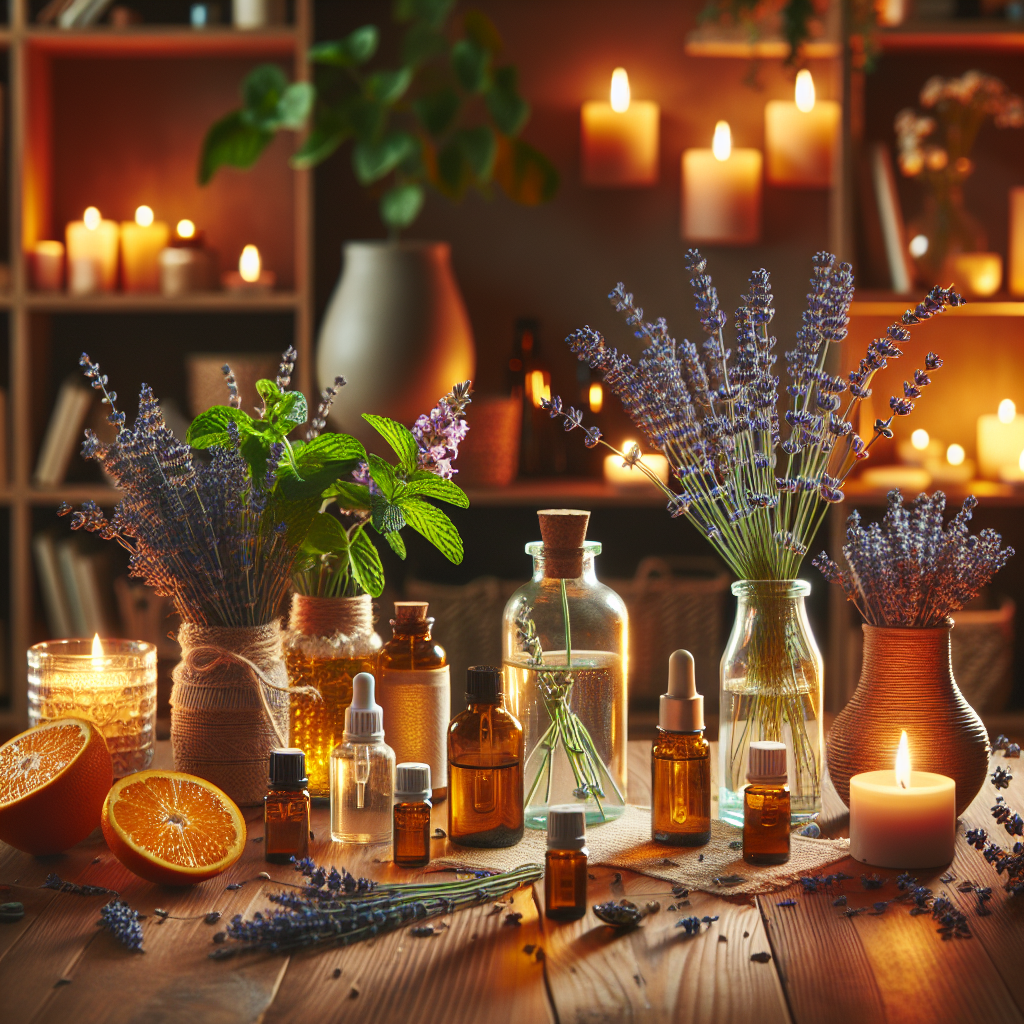
Tips and Tricks for Long-Lasting Fragrances
Achieving longevity in homemade fragrances comes down to smart blending and proper care. Heavier base notes like sandalwood, vanilla, and patchouli create a sturdy foundation that helps a scent linger on your skin or in a room longer. Balance these with middle notes and lighter top notes for a well-rounded blend.
Storage is equally important for fragrance longevity. Keep your perfumes and essential oils in dark glass bottles to block light exposure. Place them in a cool, dry spot to protect against heat and humidity.
To enhance the balance, allow your blend time to rest during maceration. This lets the top, middle, and base notes meld seamlessly—usually 2-4 weeks does the trick. To elevate your space while working on your creation, consider incorporating a calming touch like a handmade candle. It brings ambiance and inspiration.
Sources:
The Complete Book of Essential Oils and Aromatherapy by Valerie Ann Worwood
The Art of Perfumery by Septimus Piesse
Perfumery: Practice and Principles by Robert R. Calkin and J. Stephan Jellinek
Fragrance: The Definitive Guide to Making Scents by Mandy Aftel
